Xela
Location
Xela (pronounced “shella”), officially Quetzaltenango, Guatemala’s second city and capital of the defunct “sixth state of the highlands”. Xela was our first stop in Guatemala, following several recommendations. We stayed for twelve days.
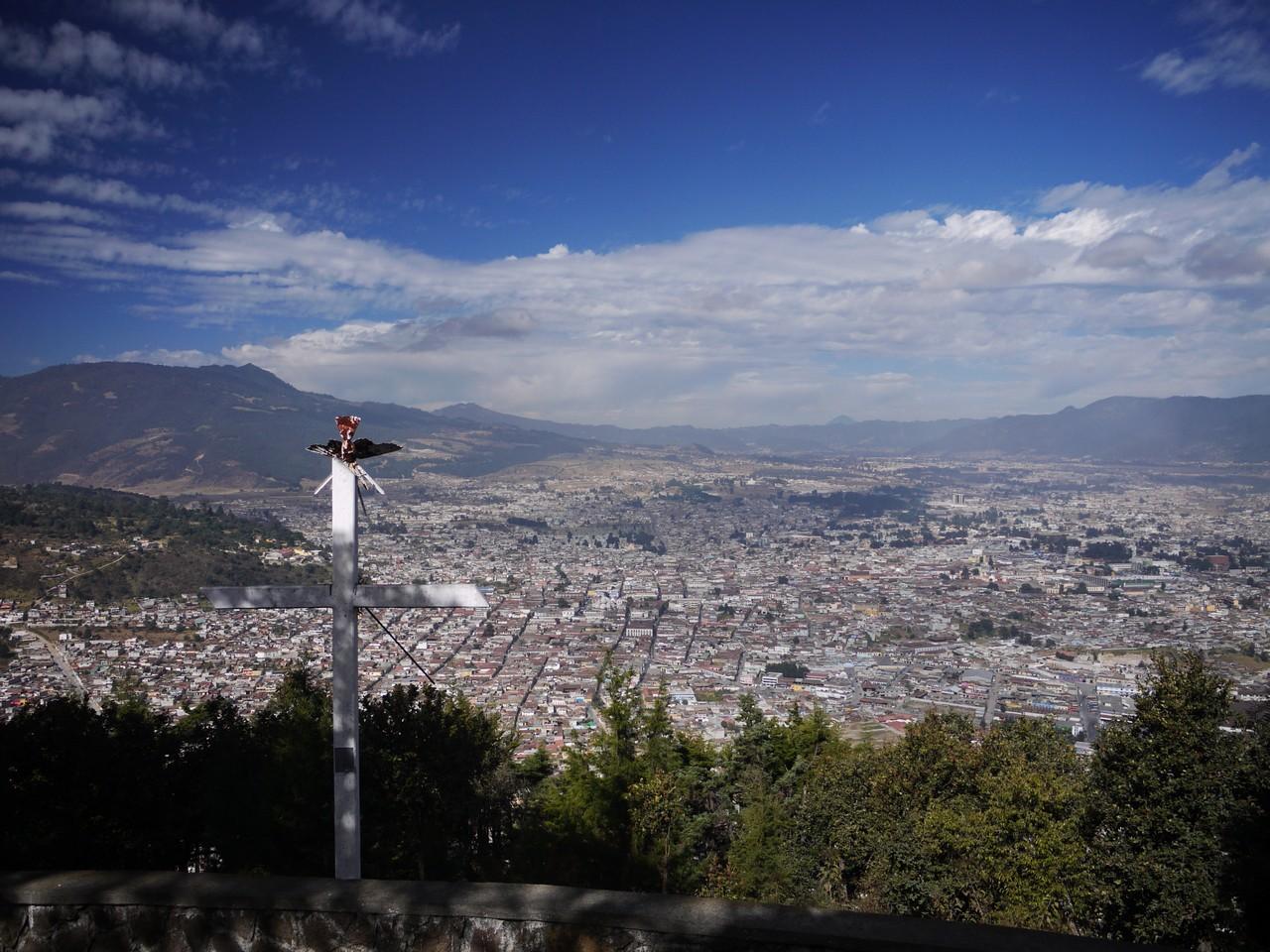 Xela, view from El Baúl
Xela, view from El Baúl
Xela feels like a real place, as opposed to a show put on for the tourists. There is a sizable population of gringos to be sure, but the vast majority of passersby are quetzalteco locals, and they have better stuff to do than chase after travellers to try and sell them necklaces or tours. They will usually take time to greet a stranger on the street, though. The city is safe, fun to walk around, and surrounded by some amazing highland scenery. On the down side, it’s rather polluted, and the weather tends to alternate between “quite cold” and “quite wet”.
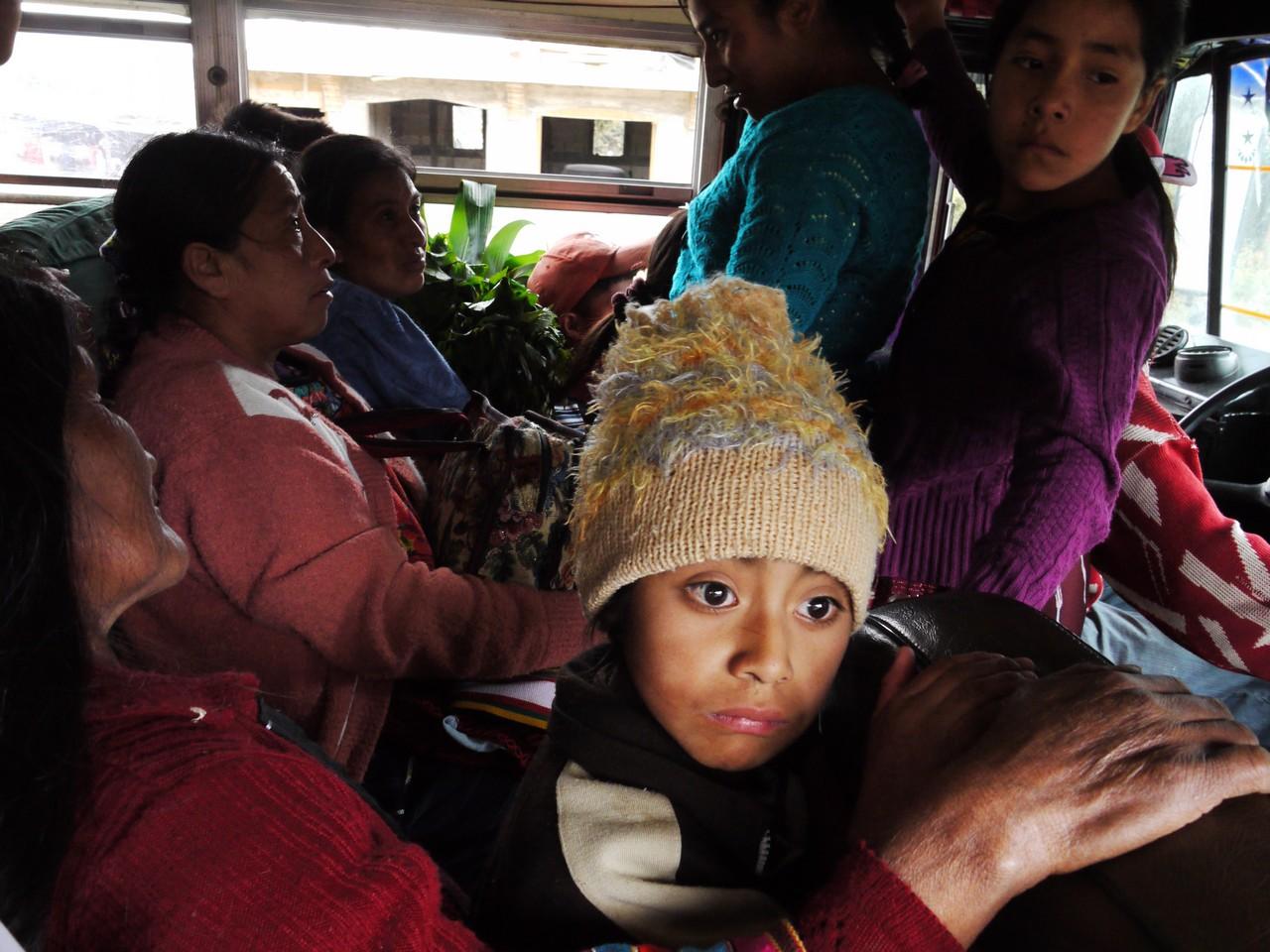 Chicken bus blues...
Chicken bus blues...
Language
We signed up for Spanish classes, like just about every other traveller to Guatemala. You can study Spanish anywhere, but Guatemala is a centre for Spanish teaching and learning, mainly because classes here are really cheap. We studied at an institution called El Portal, staying with a lovely local family and receiving private tutoring for five hours a day.
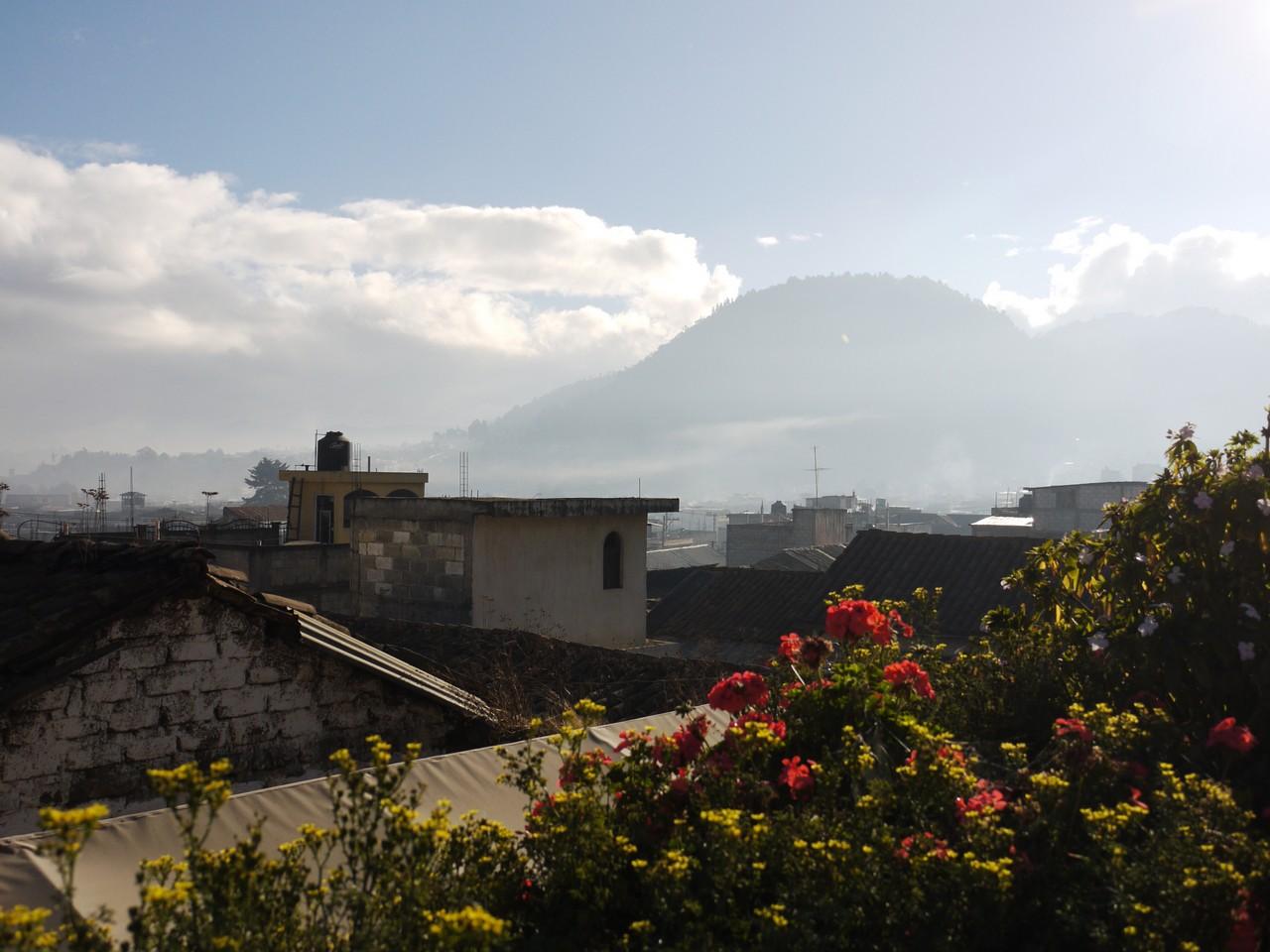 Xela, from the garden at El Portal
Xela, from the garden at El Portal
Afternoons were spent exploring the region or tracking down the best coffee, chocolate, and pastries in town. Xela does lose some of its authenticity when you step into downtown delis or entertainment spots, but you won’t hear the quetzaltecos complaining about the abundance of fair-trade coffee and organic sandwiches. There’s no shortage of deep-fried tostadas and other street food, either.
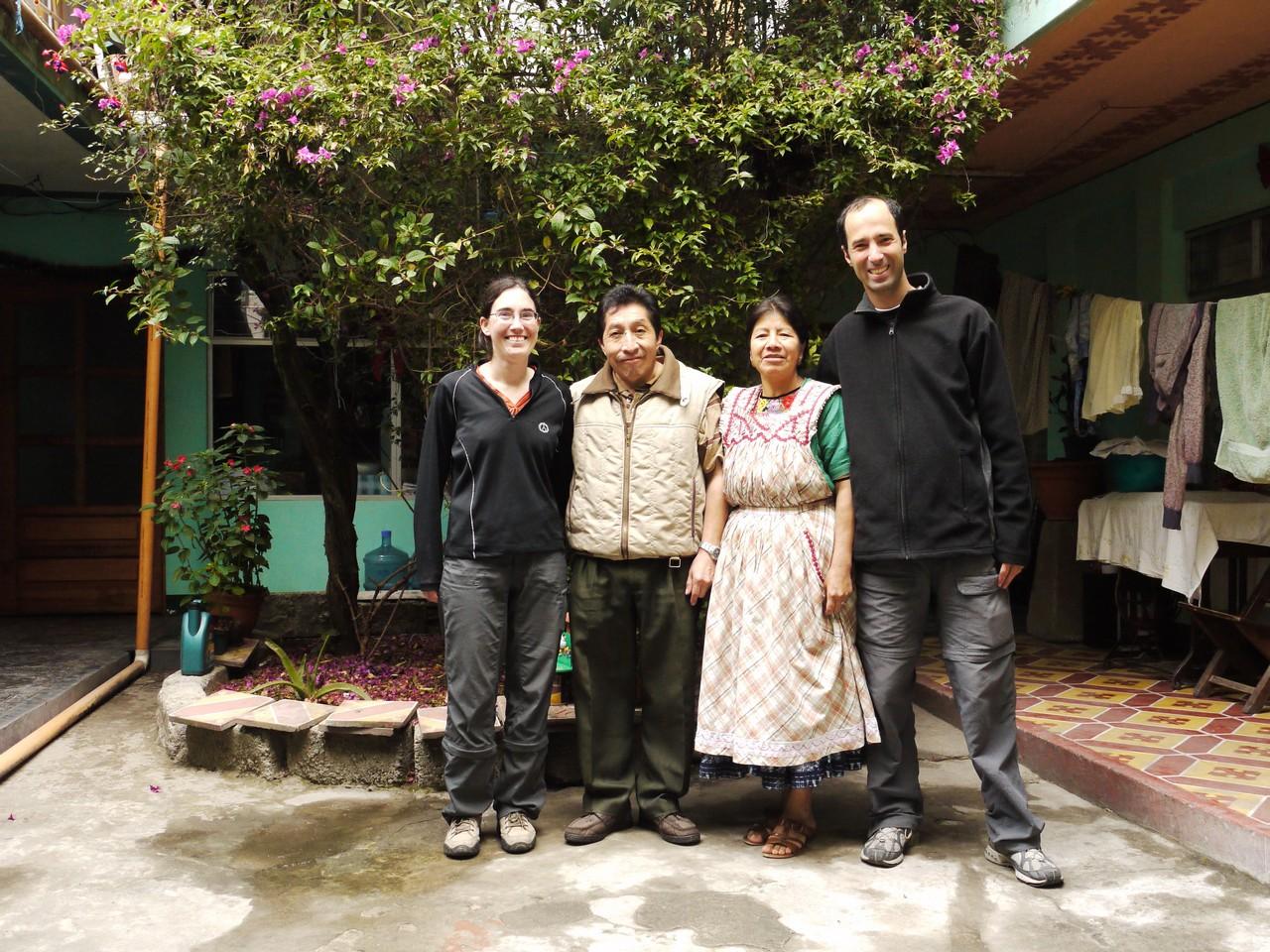 With our hosts Esperanza and Gerrardo
With our hosts Esperanza and Gerrardo
You can learn a lot of Spanish in a week. By now we are somewhat able to engage in small talk, rather than just ask for directions and order food. Interesting words we learned include the verb comerse, meaning “to eat oneself” (used for nail biters) and anteojos (eyeglasses, sounds like Antiochus). Dana complained about the excessive complexity of the word entonces (English: so; French: donc; Hebrew: az). The lovely pidgin expression “Yalla, let’s vamos” was an instant hit.
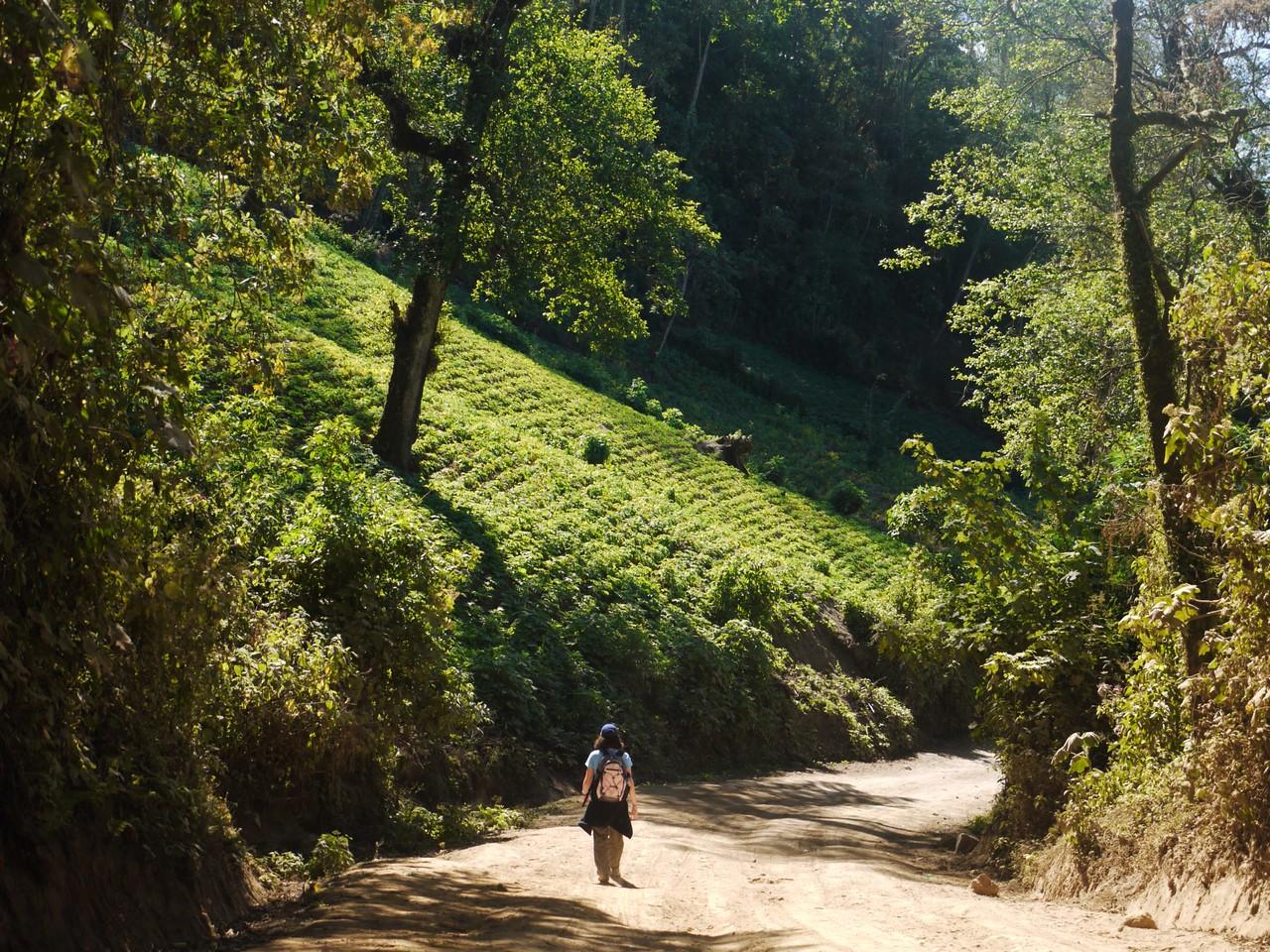 On the trail to Laguna Chicabal
On the trail to Laguna Chicabal
Since time is short and the travel bug is biting, we decided not to stay on, but may yet sign up again someplace else if the opportunity presents itself.
Expedition
The Central America trip was supposed to be about palm-fringed beaches, hikes in the jungle and plenty of tropical fish and fruit. So why are we cowering in a tent nearly 4,000 meters above sea level, bundled up in borrowed down jackets and praying that the lightning storm would pass without turning our pathetic encampment into a pile of charred debris?
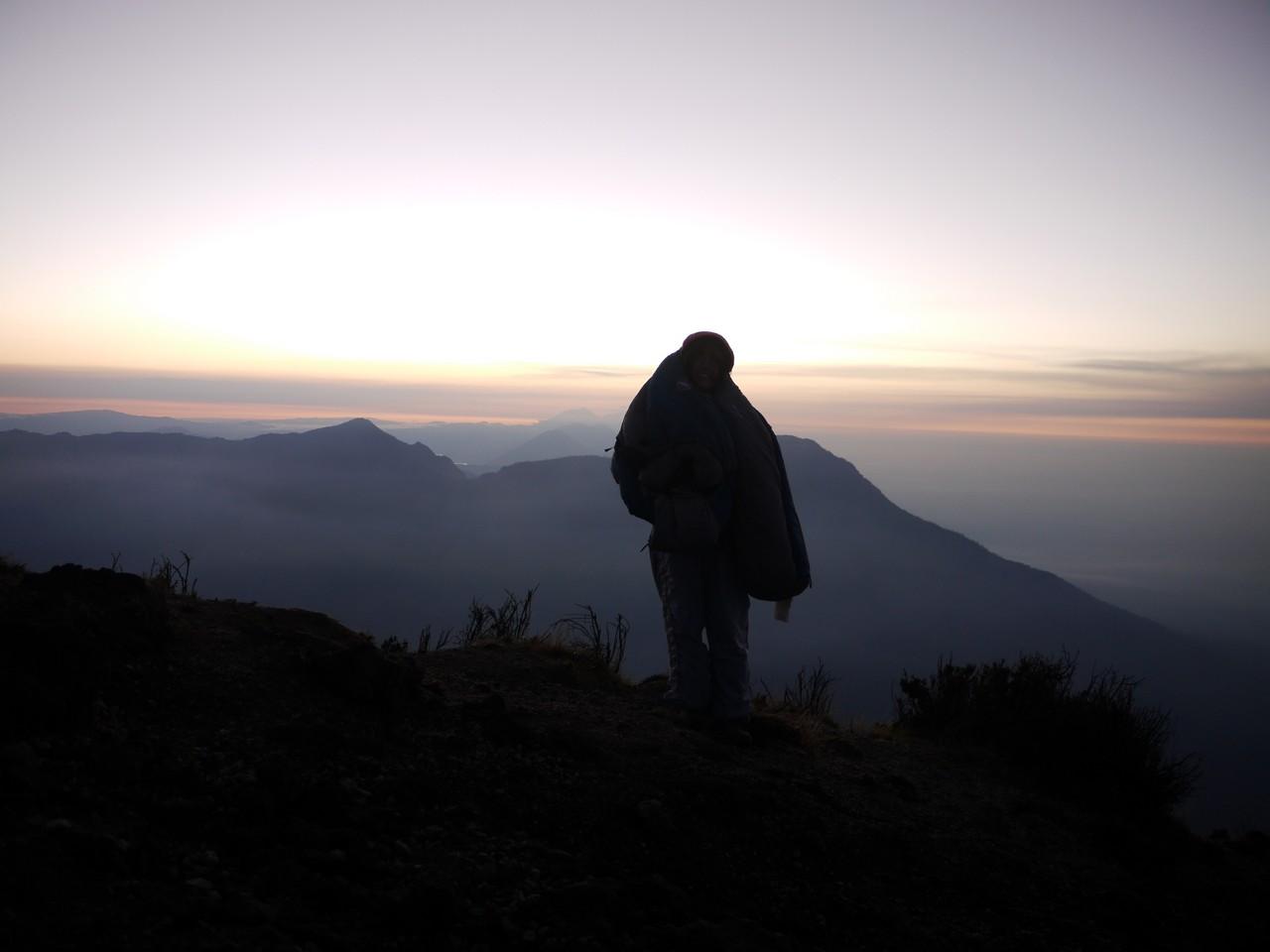 Early morning, Santa Maria volcano
Early morning, Santa Maria volcano
An interesting question, but let’s start at the beginning. Santa Maria is a huge volcanic cone towering over Xela. In 1902, after centuries of silence, it erupted big time, showering the city with ash and killing over 5,000 people. The mayor tried to minimize damage to the city’s reputation by hiding the catastrophe from the rest of the world, which of course only made matters worse. How he expected to pull this off when the ash cloud reached as far away as northern California is not clear. Anyway, following the eruption the volcanic hot spot moved to a newborn mountain called Santiaguito, which has been spewing ash and lava ever since. Santa Maria now sits on a huge empty caldera and is expected to eventually collapse, but that might take some time - a year, a hundred years, ten thousand years, it’s hard to say.
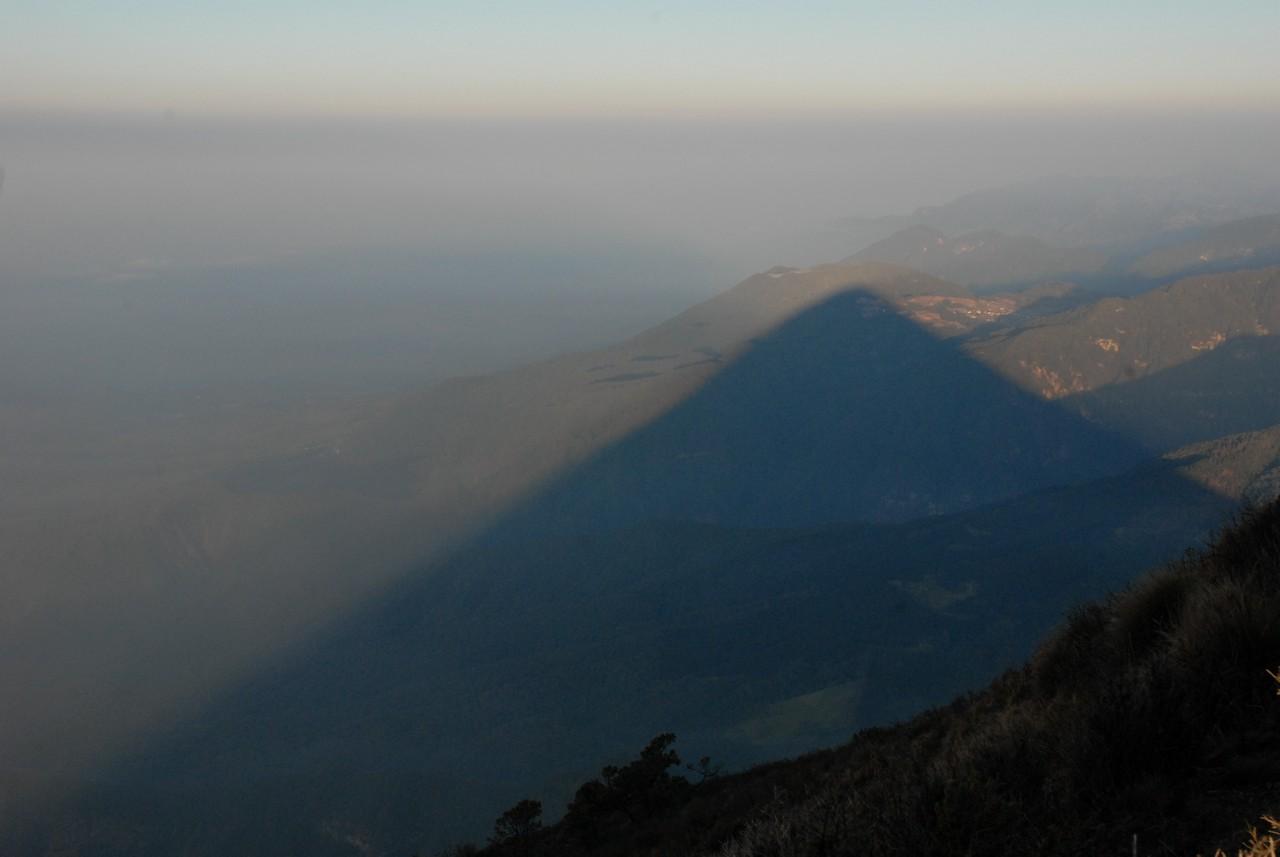 Santa Maria casts a triangular shadow over its surrounds
Santa Maria casts a triangular shadow over its surrounds
We went up Santa Maria with a group organized by Quetzaltrekkers, a nonprofit that raises money for street children. Eleven of us boarded the chicken bus around noon for the short ride to the trailhead, then followed the route up the volcano, stopping to say hi to villagers who were coming down the mountain loaded with firewood for sale. Heavy packs and thin air made for slow going, but by late afternoon everyone was at the top (which is the single flat spot on the mountain), trying to catch glimpses of scenery through the cloud cover.
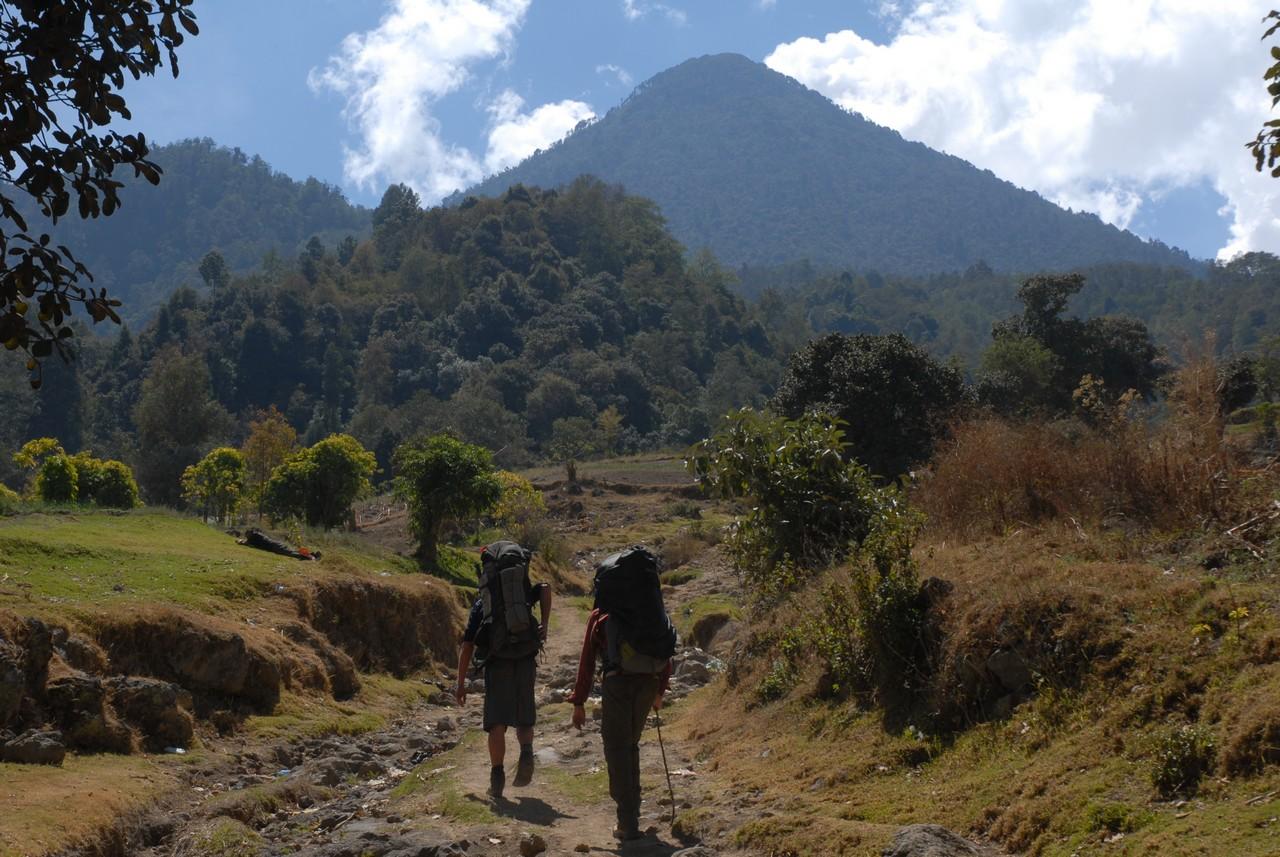 Starting out
Starting out
The peak and its surroundings were a veritable garbage dump. So depressing. We collected some garbage on the way down, but it’s a drop in the bucket (or a grain of sand, to use the more optimistic Spanish expression). We shared the peak with a Guatemalan family on a camping trip, a dog called Galletas (Cookies) who frequently escorts groups up and down the mountain, and a team of local youths who had no tents or sleeping bags, but did have some tarps, a number of machetes that they used to chop down an entire tree for firewood, and a large quantity of gasoline.
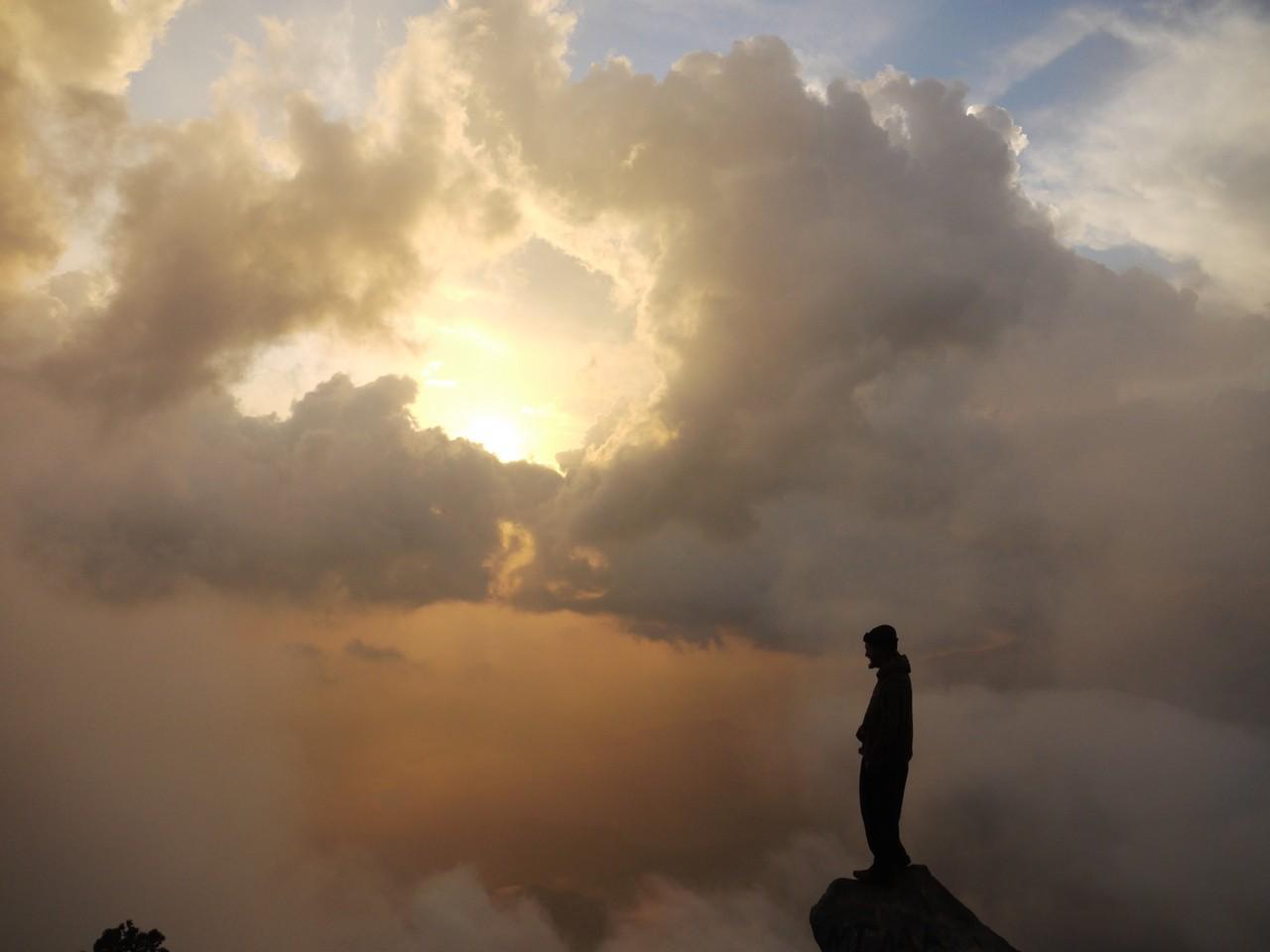 Before the storm
Before the storm
Dinner was interrupted by pouring rain and rolling thunder, sending most people into their tents, except for a couple who decided not to care. The prudent thing to do given the lighting storm was to evacuate the peak and retreat into the trees, but in the cold and rain this option seemed even less appealing than getting struck by lighting. So we stayed, and reflected on how our “training” with the Varsity Outdoor Club helps deal with such situations with a lot more humour than we would have had otherwise. Everyone survived the storm, as well as the second one that followed later that night. The local kids also weathered the storm well despite their encampment turning into a large mud pool.
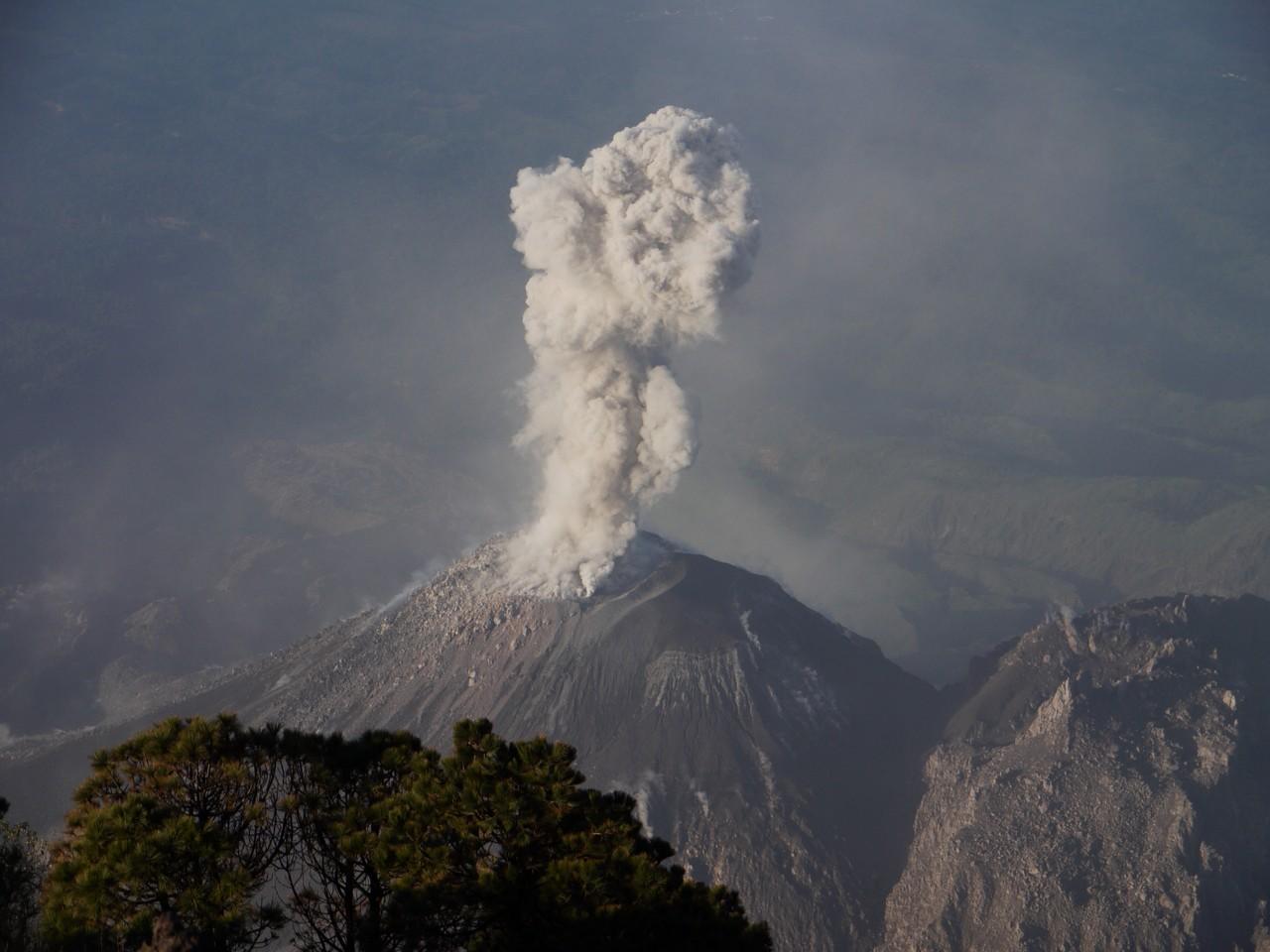 The Santiaguito show
The Santiaguito show
By 2 a.m. the skies had cleared, and the two of us ventured out of the tent to watch Santiaguito put on its show. From the peak of Santa Maria you can see about half of Guatemala, from the Pacific coast almost to the capital, and it’s easy to understand why Santiaguito is considered one of the world’s most dangerous volcanoes. Every few minutes the mountain would rumble, whistle like a kettle, then explode with lava and huge clouds of ash. A few hours later the whole troop was up to watch the sunrise, the volcano, and the gradual unveiling of the landscape around. In the distance we could see a second puff of ash rising over Fuego, another of Guatemala’s three active volcanoes.
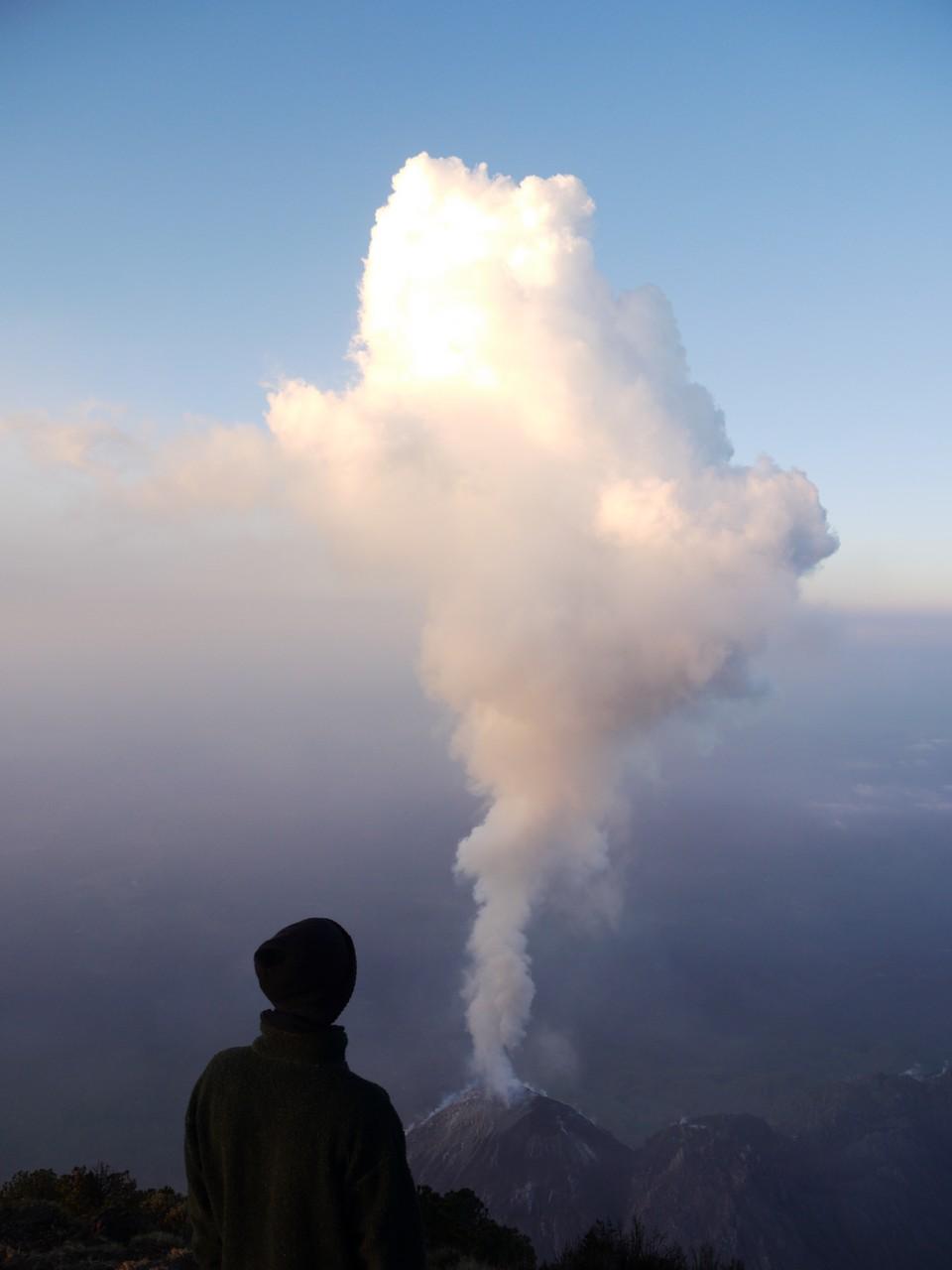 The breakfast show
The breakfast show
Eventually we tore ourselves from the site and returned to the city in time to clean up and eat a very late lunch, before hitting the pub scene to watch the Superbowl. For once, downtown Xela was completely overrun with gringos - few of whom had any interest in American football, but it was as good an excuse to get wasted as any.
Celebration
Just one festival this time - the celebration of the Virgen de Candelaria, in the village of San Juan Ostuncalco. Mountains of loudspeakers were set up in two locations in the village square, apparently by adherents of the “no such thing as too much bass” school of sound design. The noise was deafening. One location hosted an amusing dance by figures in over-the-top gladiator outfits and monster masks. We kept expecting Xena the Warrior Princess to make an appearance. The other stage was placed directly outside the entrance to the church, and featured traditional music that could have been pleasant if not for that disastrous bass. The scene inside the church was actually quite profound, with candles everywhere and long lines of people waiting to make an offering to the image of the Virgin Mary.
 Fiesta of the Virgen de Candelaria
Fiesta of the Virgen de Candelaria
Religion
It’s interesting to see what passes for Christianity in the Mayan villages. Catholicism is already one of the more colourful denominations, but its Mayan interpretation is not something the Pope would likely recognize or condone. Religious icons span everything from mainstream saints to fantastic underworld creatures. On Santa Maria, live chickens are brought to the summit and sacrificed in a makeshift altar. These altars are everywhere - we also saw them at Laguna Chicabal, where flowers and other offerings are placed daily by the water, and at Fuentes Georginas, where the ritual is followed by a relaxing bath in the hot springs. Sure beats Sunday school!
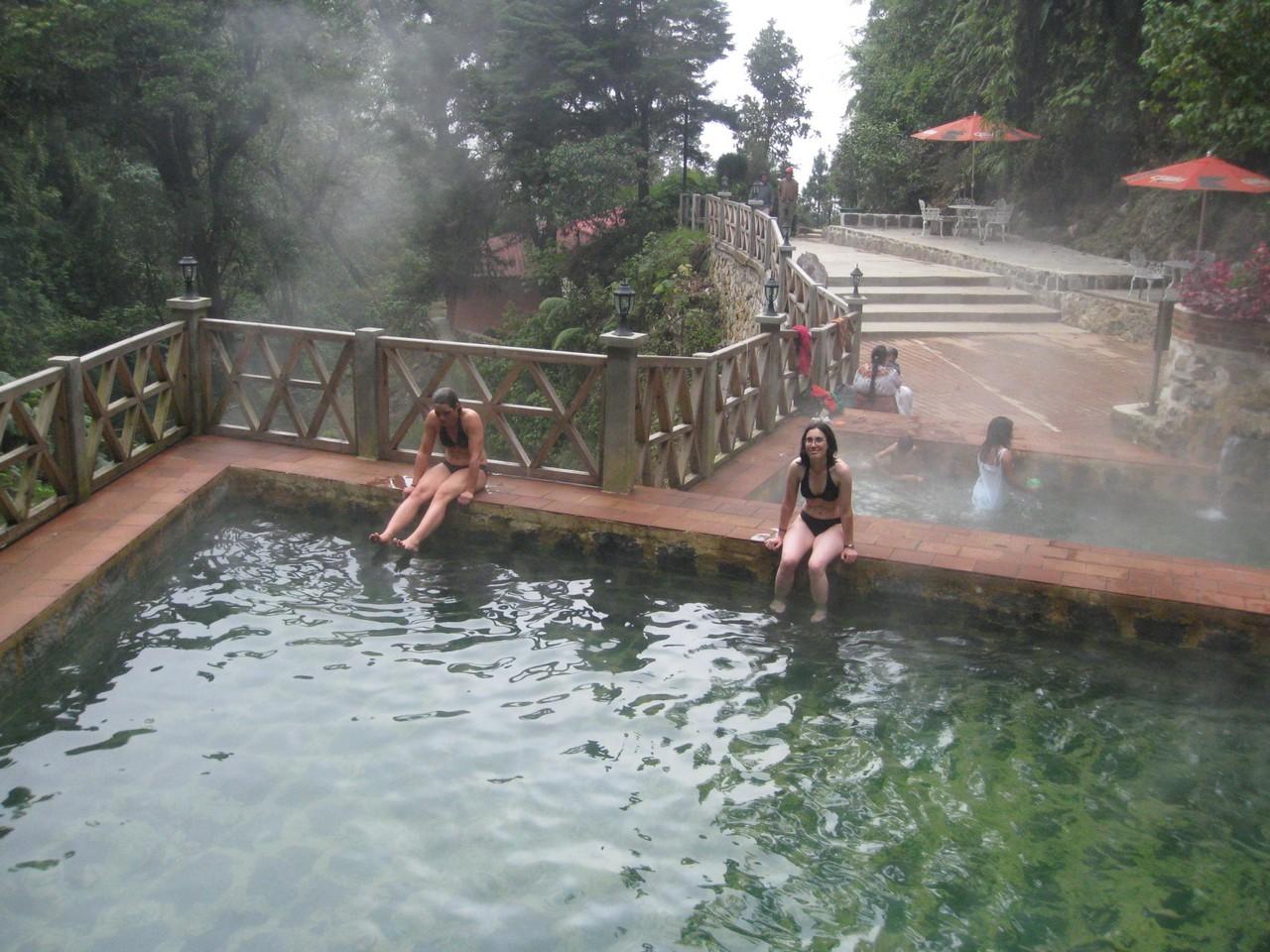 Fuentes Georginas
Fuentes Georginas
More photos from Xela here.